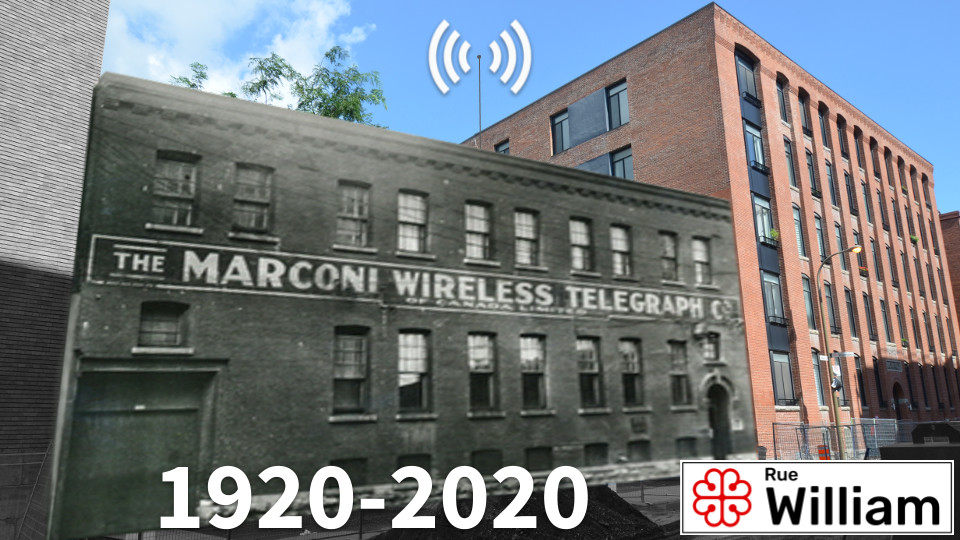On May 20th, 1920, history was made from the Marconi Wireless Telegraph Co. building in Montréal with the transmission of the world’s first scheduled radio broadcast. An audience in Ottawa tuned in nearly two-hundred kilometres away to enjoy a live vocal performance which was transmitted successfully from an aerial atop the building on William Street, seen in the photo below.

The fact that our native Montréal occupies an important place in the history of radio is an obvious source of pride. But what is even more striking in the photo above is the neighbouring building to the right. It is in that building that reelyActive was founded in 2012 and in which our own pioneering radio experiments were first conducted, some, like our novel reel infrastructure, which have been in continuous operation on site to this day!
The birthplace of reelyActive and of broadcast radio are in fact William Street neighbours!
In 1920, experimental was the idea of a scheduled radio broadcast to an audience who would intentionally tune in at a regional scale. One hundred years later, radio broadcasts have gone from sparse to ubiquitous and from human-to-human (H2H) largely to machine-to-machine (M2M). As such, experimental today is the idea of spontaneous radio broadcasts to opportunistic machine-audiences at a human scale of no more than tens of metres. In other words, radio broadcasts have become ambient data, and, today, we are pioneering the opportunity to embrace the ambient data in your space.
The neighbourhood of Griffintown is also the birthplace of the industrial revolution in Canada.
The connection between the historic neighbourhood in which reelyActive was founded and the role it played in the first industrial revolution was never lost on us in light of our own connection with Industry 4.0. However, we hadn’t realised how literally close we were to the history of radio until we stumbled upon recent articles on the Web which deeply connected us with our immediate physical surroundings. Imagine how much richer the human experience could be if our physical location and context were continuously (and consensually!) connected with the wealth of digital information on the Web! That’s exactly what we call hyperlocal context, enabled by our Pareto Anywhere open source software which, by combining short-range broadcast radio and the Internet, in effect, makes physical spaces searchable like the Web.
Read more about the centennial of radio broadcasting from the Montreal Gazette, Canadian Antique Phonograph Society and Ultra TCS (formerly Marconi).

Comments
One response to “Neighbours in Radio History”
[…] The first pitch of the reel to prospective co-founders, illustrated in the slide above, took place seven months later. And, thanks to co-founder Traian’s assembly of the first JTR-02 prototypes on New Year’s Eve, the first successful test of daisy-chained reelceivers would take place on New Year’s Day 2012, as seen in the photo below, in the building adjacent to that of the world’s first scheduled radio broadcast. […]
LikeLike